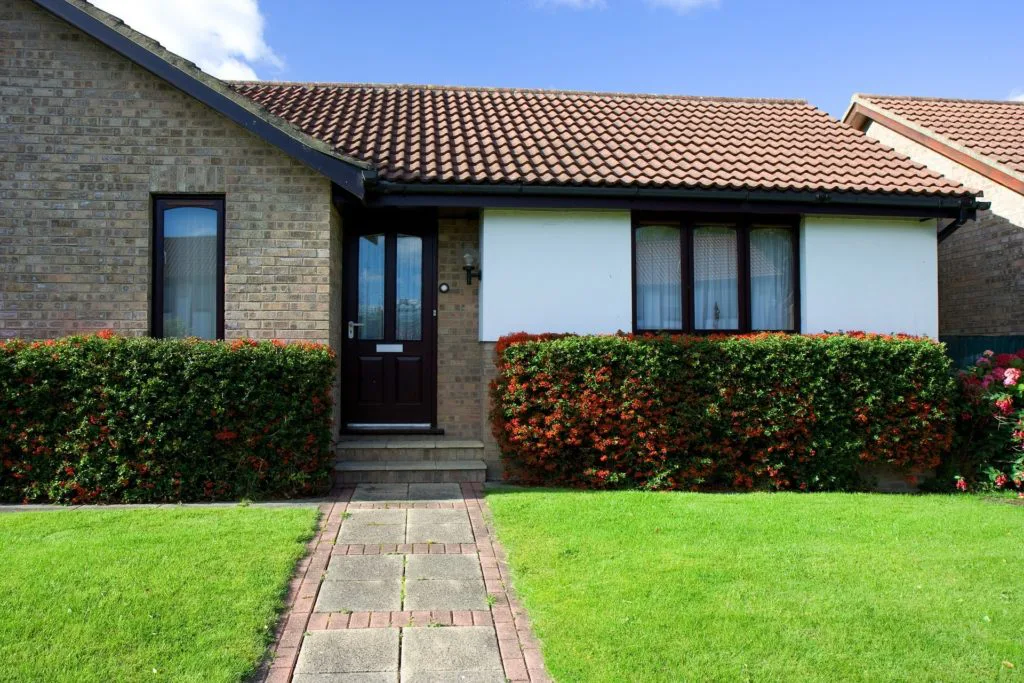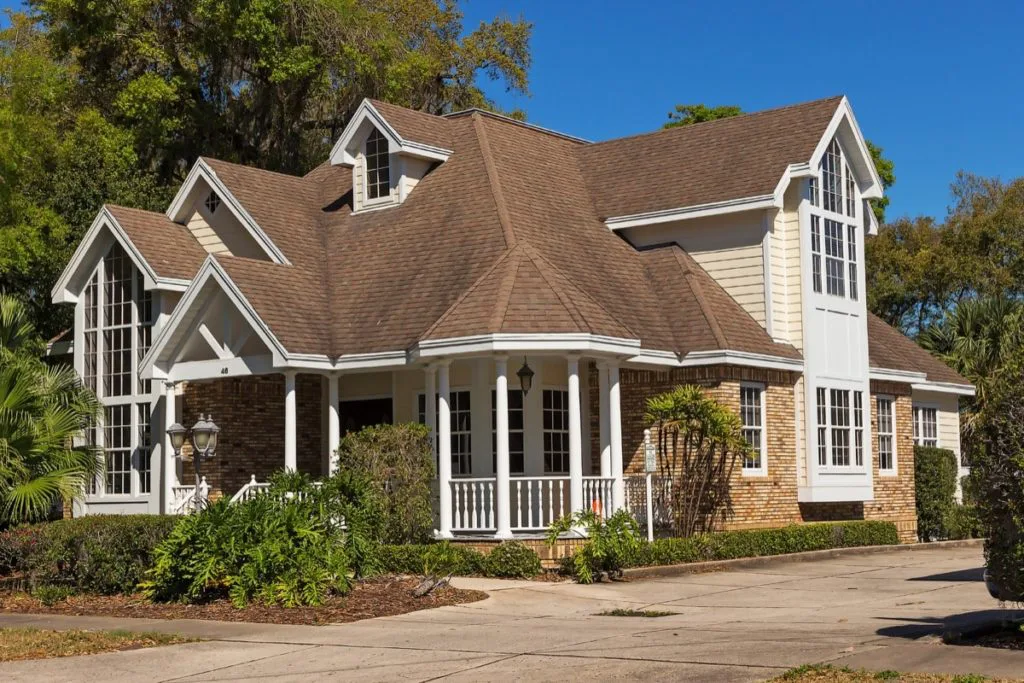Understanding your roof pitch is critical to understanding your roof and its needs.
At the most basic level, roof pitch is a measure of how steep your roof is. Roof pitch is calculated by measuring how many inches the roof rises vertically for every 12 inches of horizontal run.
Why does this matter? Firstly, understanding your roof pitch will help you understand what materials can be used on your roofing system. Secondly, roof pitch can help you determine the lifespan on your roof, and give a framework for when you should be thinking of maintenance and repairs.
In this article, we’ll walk you through everything you need to know about roof pitches and the different types available for commercial building and residential homes.
Different Types of Roof Pitches
1. Flat Roof
A flat roof is one that slopes between 0-2″ for every 12 inches of run. (That’s right, a “flat roof” isn’t necessarily 100% flat!)
A flat roof pitch is traditionally more common in buildings without a lot of rain or snow — not usually a standard choice for most older New York and New Jersey homes. The flat-roof home was a particularly popular design choice in the mid-twentieth century… Picture a classic Frank Lloyd Wright home, such as the Pope Leighey House.
Modern water-resistant materials meant that flat roofs are now commonly used for large commercial buildings throughout the world.
2. Low Slope Roof
A low slope roof is one that slopes between 2-4″ for every 12 inches of run. Low pitch roofs are often used in contemporary home design, and for industrial buildings. As with flat roofs, the low slope roof needs careful consideration when it comes to picking materials. It’s important that the materials used are water-resistant and well-sealed to allow for water to drain before it leaks.
3. Steep Slope Roof
A steep slope roof has a slope of 4″ or higher for every 12 inches of run. And steep slopes can mean steep, rising 21″ for every 12 inches of run and higher. Steep slope roofing is the most common choice for residential homes. These roofs are often considered the most visually attractive when considering house design and have other benefits including a wider choice of materials, and easy drainage options.
Pitched Roof Framing
There’s more to roof pitch than just the slope—also worth considering is the frame of your roof. Just as with the slope of your roof, framing will help you understand what materials can be used, the maintenance your roof will need etc.
There are two common styles we will cover here:
- Single pitched roof: The roof is pitched in a one direction. They’re sometimes known as pent roofs, shed roofs (where they’re often used), or lean-to roofs. This style of roof has gained popularity in modern building designs.
- Double pitched roof: The roof is pitched in two directions, meeting in the middle. A double pitched roof is a traditional style, and most commonly used for homes. The basic shape would be a triangle with a ridge in the middle – although there are many variations on this design.
Truss Roofs
It’s worth mentioning here another factor in roof framing — the increasingly common use of truss roofs. Truss roofs are now the most common way of supporting a roof in new residential buildings, replacing traditional rafters. Trusses are pre-assembled off-site and are often more economical than a traditional roof installation. However, there are disadvantages to truss roofs, especially if you think you’ll want to make modifications down the line, so be sure to consult with your roofing team to decide on the best choice for your home.
Advantages of a Pitched Roof
So now you know all about your roof slopes and pitches, what type of roof should you consider for your home?
Flat roofs have some advantages, including generally lower costs, and ease of access for maintenance. However, a pitched roof retains many advantages that homeowners should consider. The advantages of a pitched roof include:
- Less long-term maintenance: Although the maintenance of a flat roof is superficially easier, they actually require more maintenance over the life of the roof. This is because the drainage of flat roofs is less effective than pitched roofs, and will require more regular inspections and maintenance.
- Better suited to the climate: As we’ve already mentioned above, flat roofs are more common in drier climates. With our significant annual rain and snowfall, residents in New York and New Jersey may find a pitched roof better suited to their needs.
- Better insulation: A flat roof installation can leave homes experiencing extremes of heat and cold. Again, given the warm summers and cold winters in New York and New Jersey, a pitched roof can help protect your family from these fluctuations.
- Long life span: Pitched roofs, when well maintained and cared for, can last a long time, meaning you avoid disruptive construction on your home. In contrast, flat roofing typically only has a lifespan of 20 years.
- Greater flexibility: With a pitched roof, there’s useable space under the roof that you can choose to convert into attic space or even additional living areas. With a flat roof, these options are limited.
Whether you’re looking to install a new roofing system or have questions about how your roof pitch impacts your roof maintenance, A & J Reliable, Inc. can help. Contact us with your questions and we’ll help you figure out the best solution for you and your family.







